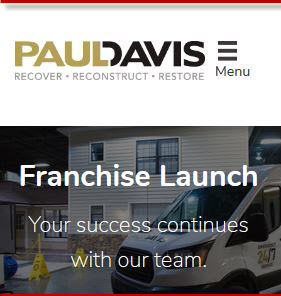
Small Business Next Step - A New and Needed Initiative for America
(Originally referred as The National Protégé Enterprise)
Originally Posted January 11, 2014 Redrafted February 16, 2014 with the guidance and assistance of RS.
Objective: To help the owners of the estimated 1,500,000 small independent businesses in our country that
currently have no business succession plan to be able to develop one that will enable them to sell their
businesses, retire and, at the same time, save the jobs of the estimated 30 million employees who work for
them in a way that will not only secure and solidify those jobs and income streams in perpetuity, but help
shape and buttress the economy as well as the nation.
Without an effective and durable business succession plan, many small businesses will cease to exist with the
retirement or death of the business owners, which will lead to the termination of the jobs provided by those businesses.
The National Protégé Enterprise will harness the creativity and business acumen of those ready, willing, and able to
master the elements of such businesses and through doing so to become the next generation of leadership for those very
businesses. Taking over the reigns of these organizations will not only preserve them, but will eventually, it is hoped,
will improve them, while continuing the progress and momentum that these companies have made in the market place.
The companies and those who will then be leading them will also be able to “pay forward” the debt owed to those who
started these businesses. As a result, all involved—owners, employees, suppliers, clients, customers, as well as their
local communities and our nation as a whole --- will benefit.
Methodology: We suggest the creation of powerful cores of knowledgeable and well-trained professionals from
a wide range of business and non-business related fields including: Accounting, Actuarial Science, Advanced Military
Studies, Advertising, Analytical Research, Architecture, Biology, Building Management, Business Management, City
Planning, Communications, Comparative Religion, Computer Technology (Hardware and Software Development), Conservation,
Design, Engineering, Education, Entrepreneurism, Facility Management, Forecasting, Graphic and Performing Arts, History,
Human Resources, Insurance, Law, Logistics, Literature, Marketing, Mathematics, Medicine, Physics, Political Science,
Purchasing, Psychology, Safety, Sales, Sports Management, Strategic Planning, and Zoology.
These core groups would have as their initial goal the identification of functioning small businesses of a certain
magnitude that have demonstrated a level of competence in a particular field, but which have no clear or probable
lines of succession. Such businesses would be rendered virtually untenable should an owner be unable to continue
working due to sever health limitations or death. These events could cause such a company to be disbanded, have its
assets sold and to have all the jobs of its employees terminated.
After identifying such companies, each one would be ranked in terms of viability in their current state and a
three-phased plan would be developed specific to the needs of each organization to determine what personnel,
systemic and strategic actions would need to be implemented:
a) To secure the company against any sudden and unforeseen catastrophic happening such as the loss for any reason
of its current leadership; and
b) To study and document the knowledge-bank and decision making process developed and used by the owner as a result
of his or her years of experience in the business in order to preserve it as a both a body of knowledge and a reservoir
of historical occurrences unique to the business being readied for the protégé insertion process.
The blunt truth about businesses that have no qualified person or persons to continue driving those businesses forward
when the original owner can no longer maintain the operation of the business is that his or her survivors generally have
no options other than to sell its assets and close its doors. It is said that one of the largest accounting firms on
Long Island, NY became as big as it did not by finding one client at a time, but rather by having one of the partners
of the firm attend the funerals of Certified Public Accountants in that area, and then approaching the widows of the
CPAs with an offer to purchase the client list of their late husbands (for ten cents on the dollar). The widows
generally had no better options in most cases and accepted the offers.
This is not something that will work with all or even most small businesses. Where no obvious potential purchasers
of leaderless companies can be identified, it is usually “curtains” for those companies.
The National Protégé Enterprise (NPE) initiative would help circumvent this otherwise almost inevitable downward spiral
of companies that have no succession plans by offering business owners another option that is a good deal for all concerned.
The business owners would get the protégé they wished they had, but in the form of the NPE. The owners would now have a
lead person who would devote one to two years in learning the business in every way, documenting the entire process so that
others on the team could provide leadership as needed. This would go a long way to adding to the longevity of the business
once the final transition to the new ownership was affected.
The individuals who become the protégés—those taking over the businesses being rescued— will come from the ranks of proven
leaders with advanced training and experience in strategic thinking, problem solving, communications, and budget management.
The pool of candidates for these positions will include recent graduates from schools of business management or
entrepreneurial programs, retired military leaders, and from a core of protégés in training established for this express
purpose by the National Protégé Enterprise. All candidates will benefit from the experience of going through this special
training program to help insure the highest possible degree of readiness for what will be expected of them.
Two concerns that a business owner may have when working with a protégé include:
a) “How do I know that this person is going to ‘stay the course’ and take over after I educate him or her about
how my business works?” and
b) “What if something happens to this protégé, which would leave me right where I was when I started; except that
I have spent a ton of time and resources and have next to nothing to show for it?”
There may be more than these two concerns on a business owner’s mind when trying to put a viable succession plan in place,
but at least these very important ones can be addressed by the National Protégé Enterprise plan. The National Protégé
Enterprise program will offer and serve as a type of “insurance policy” to participating business owners through use of
a redundant protégé appointment plan. This would mean that if for any reason a primary protégé is unable to continue
either temporarily or long term, a secondary (or even a tertiary) one who has been regularly and deeply involved in the
same training, preparation and decision making readiness training in that business as the primary protégé experienced
would be deployed to take over. It is one thing to have what used to be called a “key man” and what today might be called
a “key person” policy in place, but all such an insurance policy gets you when the “key man” or “key person” is gone is
a manager who then must learn the business “from scratch.” The redundant protégé appointment plan is, or would be, perhaps
the only way to come as close to being able to guarantee as smooth a succession process as possible with the greatest
possible chance for protecting the “life” of a business protected by it and thereby permitting that business a longevity
beyond anything that otherwise could ever be hoped for it.
It may seem extravagant to devote such an amount of manpower to the successful succession of a business, but it must be
done with that level of forethought to make as certain as humanly possible that the objectives of the plan are attained,
i.e. to preserve and build upon the foundations of the businesses being served and protected. Far too many people’s
livelihoods will depend on the successful execution of each succession plan to do any less. Similarly, those involved
cannot be too careful—no part of the effort can be minimized in terms of its importance.
When done correctly, it is our belief that the protégés in each of the myriad of businesses served by the National Protégé
Enterprise initiative will move the businesses to the next level, and the protégés will become the successive owners of
those companies. There will be, however, some important conditions attached to these successions of ownership for at least
a certain amount of time. During the succession preparation process, the original owners will stay on in a consulting
capacity to ease the transition from one management team or style to the other, and to be there as the new owners make
the many decisions dealing with the company’s operations. This will continue until it is apparent that the new management
team can operate on its own. The ties would still remain from a financial point-of-view until the original owners and
their spouses are no longer alive; a certain flow of monies will continue to be paid to the former owners on a predetermined
basis or formulaic basis that will be their final compensation for their having built and run the company as they did.
Beyond compensation to the original owners of the companies, there may be another funding stream during the succession
process. Each company or the original owners of those companies will be permitted to establish a foundation or select an
existing foundation, not-for-profit organization, or charity that will be the recipient in perpetuity of a certain portion
of compensation that would have been due to be paid to the original owners. After the death of the original owners and their
spouses these funds or a portion thereof will be directed to the designated foundations or charities.
While this may appear to be an extravagance, it is completely in keeping with the nature of the overall objectives of the
entire enterprise: to continue the realization of the worthy goals and objectives established by the original company
owners and advanced through the efforts of the National Protégé Enterprise.
The net and final effects of the National Protégé Enterprise include:
- That the original companies continue to operate.
- That the jobs in those companies get saved.
- That new jobs get created as the companies grow.
- That the original owners of those companies are compensated appropriately for having brought their companies as far as they did and then having handed them over to new owners who can take the companies forward to a hopefully long and rewarding future.
- That the new owners get the opportunity to run what will eventually be their own companies, enjoying the benefits and rewards associated with doing so.
- That the clients and vendors of those companies continue to enjoy the relationships they had with these companies.
- That taxes that had been being paid to local, state and federal agencies by employees and owners of those companies continue to be paid, and, as those companies thrive, that such tax payments increase for the betterment of the society in general.
- That those involved in the planning and running of the National Protégé Enterprise itself will have created a community resource that will continue to save companies in the future from falling into obscurity as so many companies do each year while developing, with experience and time, new and more effective ways of doing so.
The startup funds required to launch the National Protégé Enterprise can come from a variety of sources but sustaining
funding can eventually be derived from the very companies the National Protégé Enterprise preserves. The “earmarked”
funds that had been flowing to the original owners and their spouses through to the end of their lives and which a part
of would be used to fund a charitable organization selected by the former owners would leave a remainder that would be
directed to fund the good work of the National Protégé Enterprise. That remainder funding multiplied by the number
companies saved or preserved and again by the number of years of successful existence could very well replace the need
for sustaining funding from any other sources.
The seed money for the National Protégé Enterprise can be committed by one or more government entities such as various
authorities that serve the interests of the general public in areas of transportation for example or from one or more
private foundations dedicated to saving jobs, encouraging entrepreneurism or fostering community based self-sustaining
assistance programs.
The concept of a “barn rising” comes to mind. In years gone by, before a barn would become the next crucial step in the growth
of a family farm, much work would have been done. Smaller structures would have been built for all sorts of purposes: sheltering
an animal or two, protecting farm machinery, storing seed corn, tools and all sorts of important farm related implements. Then,
perhaps after the need for a barn became a necessity but costs remained a barrier to building it, word would be circulated
through the community and, at a particular time and day the community would come together with the tools and materials necessary,
and in short order a new barn was raised up to the benefit of the family who needed it and to the benefit of the community-at-large.
Our country has some how drifted away from this type of community—it has become an “every man for himself” society in many ways,
unless and until we are faced with a dire emergency.
As 1,500,000 small businesses in the United States (with their thirty million jobs) face a certain and relatively rapid
demise over the next ten to twenty years, our country is facing, in our opinion, a dire emergency. Coming together as a community
in the way our forbearers raised barns for one another as well as for their mutual benefit is surely in order today.
If you have read our proposal and are convinced that the establishment of the National Protégé Enterprise is a worthy idea,
please take the time now to contact us and let us know so we can keep you updated as to our progress and how you might be of
help down the line. If we have missed something in our presentation, which prevents you from asking, “Where do I sign?” we
invite you to let us know. Please tell us what is missing and then come forward and join us in helping to perfect the National
Protégé Enterprise concept, which we believe is a program designed to benefit our entire nation.
Source Material:
'The Economy Stole My Retirement' Retirements in Peril for Entrepreneurs in Their 60s and 70s Who Can't Sell Their Companies -
By Sarah E. Needleman and Emily Maltby Updated Sept. 12, 2012 2:49 p.m. ET Wall Street Journal
Marine Corps General Partners with Dylan Ratigan to Lead Veteran Job Incubator - May 21, 2013
Major General Melvin Spiese Named Executive Chairman of Veteran Job Corps (VJC) - May 21, 2013 (Los Angeles, CA)
Crain’s New York Business: Graying of an industry leads to mergers - With young people shunning the biz, small-firm partners
seek white knights. By John Goff - September 29, 2013 12:01 a.m. - Updated: October 7, 2013 2:42 p.m.






